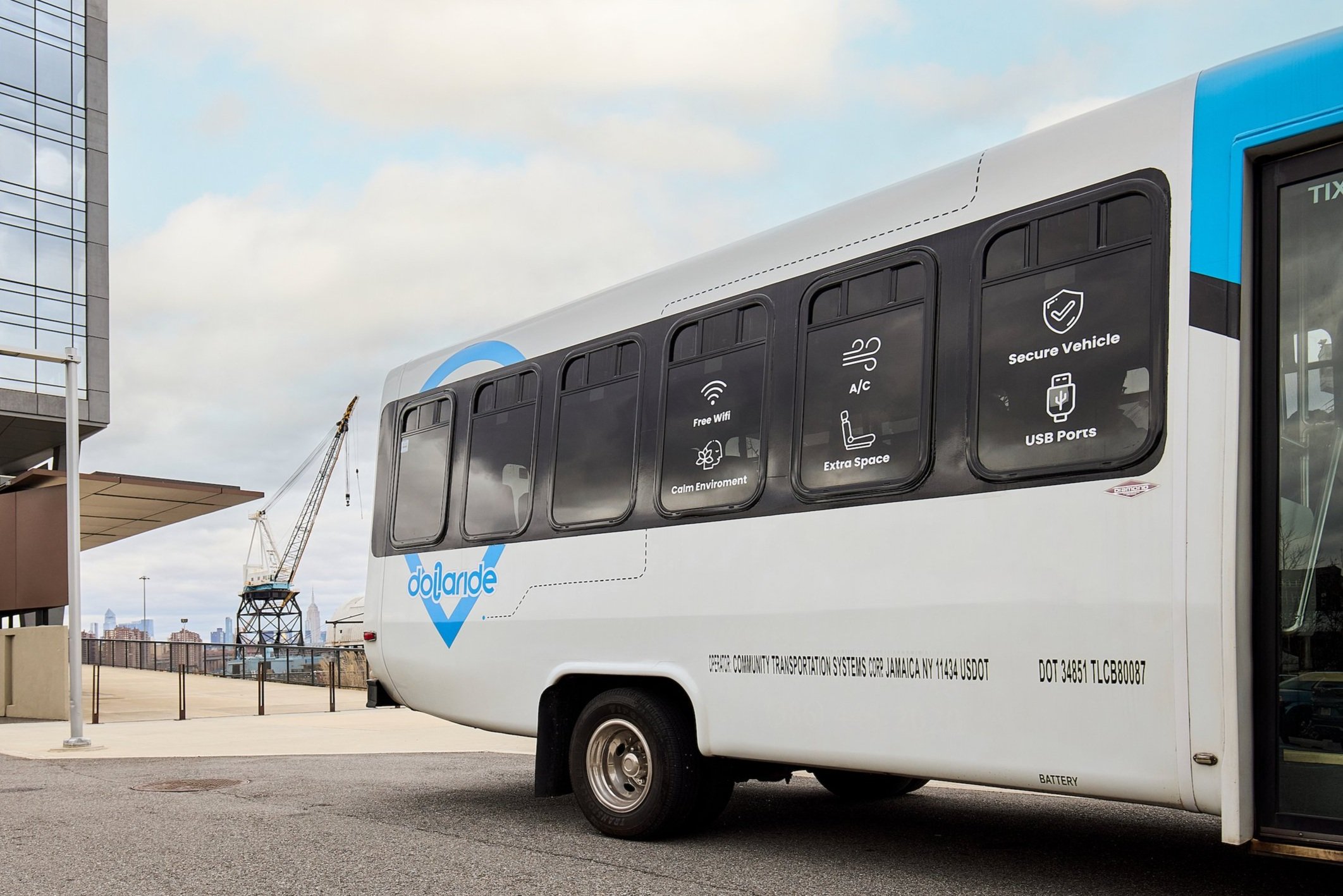At a time when cities continue to expand as populations increase, it is no surprise that mobility tech and microtransit companies are popping up left and right to shake things up. Mobility tech includes technologies and services that enable people (or goods) to move around more freely, while microtransit services are ones that provide on-demand transportation. At Dollaride, mobility tech and microtransit are the names of the game, but the focus is on providing a unique transportation service geared toward helping urban communities that are vastly underserved by public transit. In this article, we'll explore four ways Dollaride is set to change urban transit forever.
1. By leveraging familiar ride-share technologies.
There’s no denying how microtransit has created a lane of its own when it comes to modern transportation. But some companies are taking it a step further. Dollaride works directly with dollar van drivers, the largest informal transit network in the United States, to keep overhead costs low and rides accessible to everyone. Their mobile application leverages familiar ride-share technologies like stop requests, GPS location, and cashless payments to make it easy for drivers and riders to plan their daily commute. Organizations like these believe that the combination of efficient technology and local driver networks set them apart from the other rideshare services out there. By working together, communities can achieve more economic growth and be better served by the residents that live there.
In New York City, more than 120,000 passengers rely on dollar vans each day. This number is still growing, and Dollaride wants to serve them all.
2. By forging unique partnerships with local businesses.
One of the greatest challenges transit agencies face regarding public transit is building out infrastructure to accommodate increased populations. Unfortunately, transit deserts are becoming more and more common as development grows at rapid speeds. With this in mind, Dollaride appears committed to forging relationships with local organizations that will help improve transportation options in communities that need them the most. Whether it’s offering training programs for dollar van drivers or working with local businesses to expand transit access, Dollaride believes everyone deserves reliable transportation options regardless of where they live.
Over the last month (Aug-Sept 2021), Dollaride’s repeat ridership has increased by about 13%, meaning more first-time riders are riding again.
3. Through plans to modernize commuter vans with clean technologies.
Utilizing technology to improve mass transit in urban communities deserves big thinking. But there aren’t many things bigger, or more important, than fighting climate change. U.S. bus transit, which has about a quarter (28%) of its seats occupied on average, emits an estimated 33% lower greenhouse gas emissions per passenger mile than the average U.S. single-occupancy vehicle (source). By modernizing informal transit services with clean technologies like electric vehicles and citywide charging stations, Dollaride will be able to drastically reduce carbon emissions while also improving public health conditions in low-income communities across America. Dollaride CEO, Su Sanni, believes the combination of dollar vans and electric vehicles is an idea built for the future:
One of the things we’re trying to do here is position commuter vans as a clean transportation service, but also prepare these smaller companies and the drivers for the future. That future means removing carbon from transportation.
- Su Sanni, Dollaride CEO
The company is working with several NYC-based transit, energy, and social impact organizations to help create a clean transportation service that spans throughout NYC.
4. By providing an easy, reliable alternative to buses.
Dollar vans have been serving underserved communities for over 30 years. They’re fast, reliable, but most importantly they’re accessible in areas that most public transit options are not. Many folks who rely on public transit would agree that the bus is a solid mode of transportation for those flexible enough to adapt to its ever-changing schedules and routes. Unfortunately, not everyone has this luxury and the lack of access can actually affect the health and well-being of the community. It’s estimated that for a city with a million residents, an increase in the proportion of households located in transit-oriented developments from 10 percent to 20 percent would produce nearly $71 million of total annual health benefits, and an increase from 10 percent to 40 percent would generate more than $216 million of total annual health benefits (source).
Whether it’s due to work and school obligations, or traffic conditions and weather delays, getting around without a car proves difficult when you have no other option other than to wait. However, as microtransit companies such as Dollaride enter the market, riders won’t need to compromise their schedule or lifestyle just because they live in an underserved community.
It’s simple. Dollaride’s goal is to provide easy access to clean, reliable, and affordable transportation options that don’t require long waits at a bus stop or transfers from one overcrowded train car to another. Organizations like this make it easier for people in low-income neighborhoods to get around without having to rely on expensive taxis or rideshares. By leveraging familiar technology and combining it with a vast network of dollar van drivers, the plan of modernizing informal transit and increasing access to mass transportation carries on. Dollaride, along with other mobility tech and microtransit companies, could very well change urban transit forever. It’s time to hop on.












